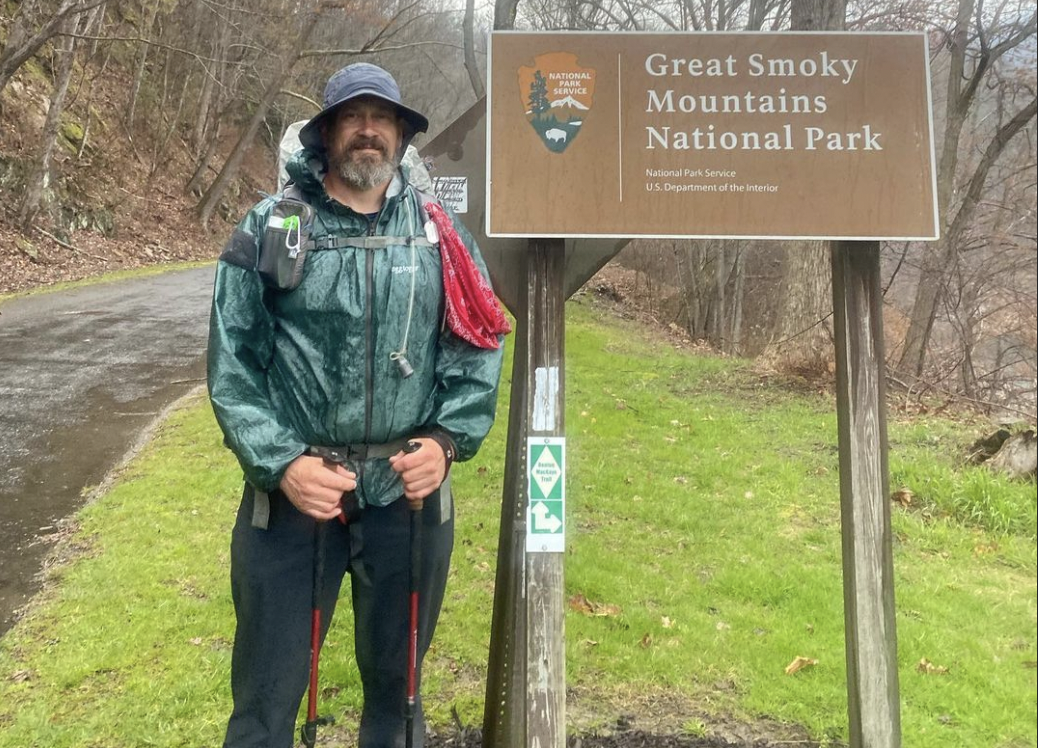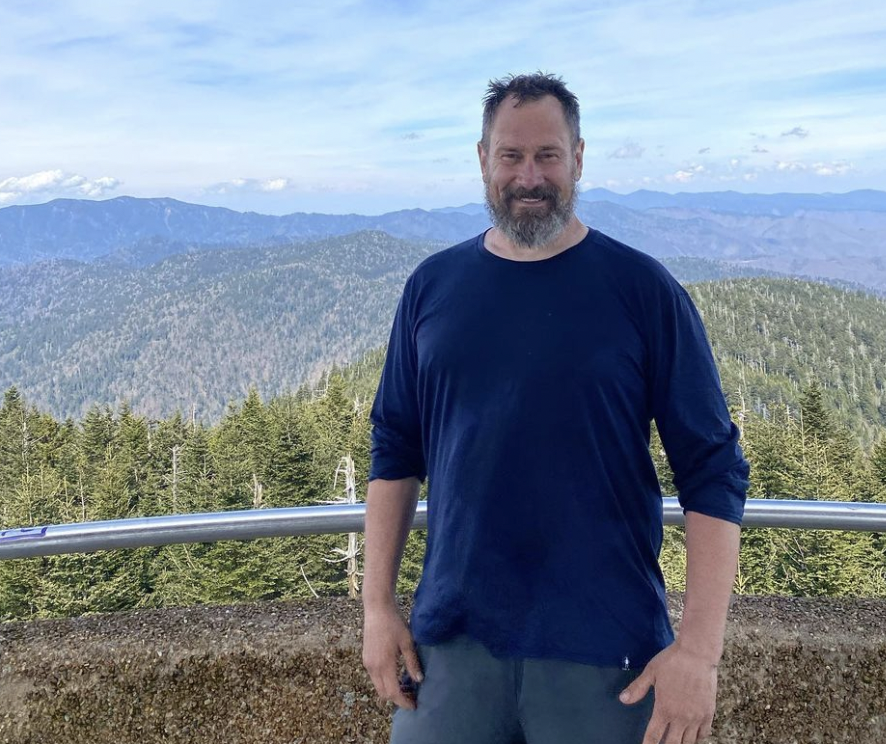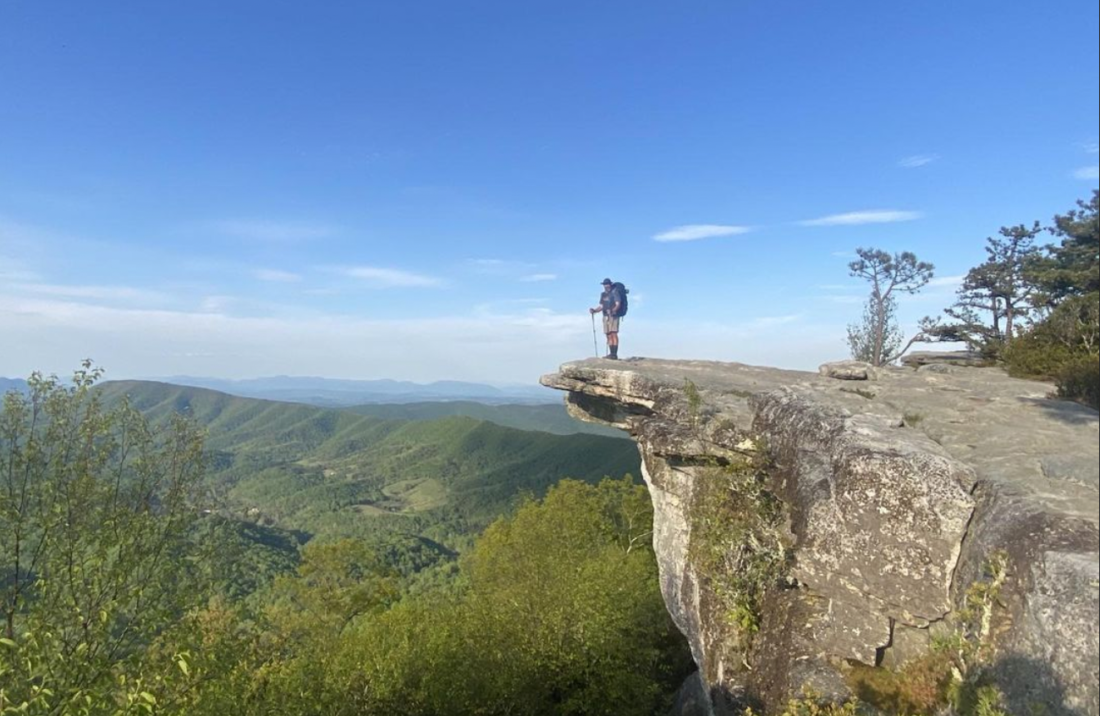Lessons learned on the Appalachian Trail: Tonganoxie man speaks about his more than 5-month hike, shares some ‘pro-tips’

photo by: Austin Hornbostel/Journal-World
Tonganoxie native Dan Yunghans speaks during an event at Sunflower Outdoor and Bike Shop Friday, Oct, 13, 2023. Yunghans recently completed a through-hike of the nearly 2,200-mile-long Appalachian Trail.
Dan Yunghans’ five-and-a-half-month journey along the Appalachian Trail, one of the best-known long-distance hikes in the U.S., came with plenty of lessons learned — or “hiker pro-tips.”
One of them was “If you see a bench, sit on it” — a reminder to take advantage of small chances to rest along the nearly 2,200-mile route from Georgia’s Springer Mountain to central Maine’s Mount Katahdin. Another was that “the trail provides” when a hiker is in need.
Those were among the bits of wisdom that the Army veteran from Tonganoxie shared on Friday at Sunflower Outdoor and Bike Shop during a talk about his hike, which he completed in mid-August.
“It was hard,” Yunghans said of the route, which crosses through parts of 14 states, eight national forests and six national parks. “Dude, there is nothing nice about the Appalachian Trail. It is a wonderful experience, but it is probably one of the most difficult things I’ve ever done in my life.”

photo by: Dan Yunghans
Early on in his journey along the Appalachian Trail, Dan Yunghans passed through Great Smoky Mountains National Park, which straddles the border between North Carolina and Tennessee.
Like many others who complete a “through-hike” — the act of hiking an established long-distance trail end-to-end without stopping — Yunghans said he often found himself searching for the “why” behind his decision to tackle the trail all in one go. He said that reason is different for everyone — another pro-tip: to “hike your own hike.”
Some people, for instance, hike the trail because they’re at a crossroads between major milestones in their life. But for Yunghans, the answer ended up being a bit simpler — he did it because the trail was there, and he was determined to finish it.
“I would lay there in my bed — in my tent, on a mat — and I would look at my wet shorts, my wet shirt and my wet socks and I would start to complain to myself,” Yunghans said. “Like, why am I doing this? I guess the way I convinced myself, the answer to the ‘why’ for me, was ‘I’m going to get up, and I’m going to start walking today, and that’s all I’m going to do.'”
By the time he summited Mount Katahdin, Yunghans had lost 60 pounds due to the thousands of calories he was burning each day, and he’d rolled both of his ankles and sprained both of his knees at different points along the way. The lessons he learned about giving his body the rest it needed were some of the most important.
“You either accept the pain or you leave the trail,” Yunghans said. “It’s toughness, it’s grit, it’s pain management.”

photo by: Dan Yunghans
In March, Dan Yunghans stopped at Clingmans Dome, the highest point along the Appalachian Trail located in Great Smoky Mountains National Park.
But it’s not just about keeping your body in good condition, it’s also about being in the right frame of mind. Yunghans said another lesson he learned was “when someone gives you something, accept it.” He talked about the many kind strangers he met along the Appalachian Trail, from fellow hikers to locals who made a habit of lending a hand to through-hikers as they passed through the community they lived in. The last time Yunghans spoke with the Journal-World about his journey along the trail, when he still had about a third of the way to go, he said the people had been the biggest highlight.
Yunghans also shared some tips with attendees about hiking necessities like how to pack gear, and he said that “you get to choose how you suffer” along the trail. He’s the type of person who prefers more comfort while he’s hiking, so he’s fine with the trade-off of having to tote a heavier bag. But other hikers go the “ultra-light” route and don’t take nearly as many supplies with them between points where they might restock.
“It’s not an easy thing to do; everybody has their reason for doing it,” Yunghans said. “It’s a very personal thing. It’s personal all the way from the ‘whys’ to the ‘hows’ to the gear that you use.”

photo by: Dan Yunghans
Dan Yunghans stands at the edge of McAfee Knob, an iconic stop along the Appalachian Trail located in Virginia’s Jefferson National Forest.







